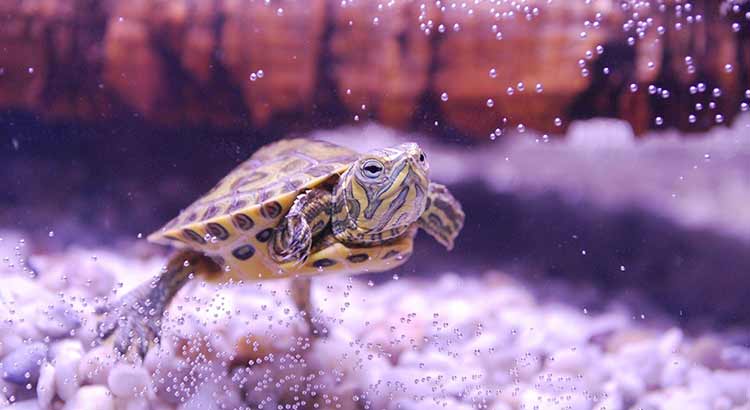
So do red eared slider turtles have gills. Do Turtles Have Gills.
Turtles dont have gills but they have lungs that act the same way ours do.
Do turtles have gills. Do Turtles Have Gills. The turtles can take up dissolved oxygen from the water using these papillae in much the same way that fish use gills to respire. Turtles dont have gills instead they have a cloaca which acts in a similar way.
The cloaca is a gill like structure that is able to absorb the oxygen in the water. But unlike gills they arent able to provide all the oxygen a turtle needs. Does a turtle have gills.
Because turtles arent fish they dont have gills which means they cant breathe under water. Turtles have lungs and breathe air just like we do. Do Turtles Have Gills or Lungs.
Turtles dont have gills but they have lungs that act the same way ours do. These lungs are a bit different from other mammalian lungs but the functions are all the same. Turtle lungs sit under the carapace and the spine.
Sea turtles do not have gills. While that would be super cool turtles are reptiles and have lungs meaning no matter the fact that they spend most of their lives underwater they need to come up to the surface regularly for air. Turtles get oxygen from the water by moving the water over their body surfaces covered in blood vessels.
So it is very sure and it has been seen that all. Because turtles arent fish they dont have gills which means they cant breathe under water. Turtles have lungs and breathe air just like we do.
That means that turtles cant stay underwater all the time. They can hold their breath for a very long time but they have to come up to breathe every so often or they will drown. So do red eared slider turtles have gills.
No red eared slider do not have gills. In fact no reptile has gills. Turtles have lungs for breathing just like humans which involves needing oxygenated air to breathe with in obviously unavailable underwater.
Reptiles are born in eggs on land and amphibians are born in eggs in the water. And because amphibians are born in water they have gills when they are young whereas reptiles have lungs. In fact amphibians are a lot like fish when they are first born but when they grow they become more like reptiles.
Complete info about it can be read here. The body of a turtle is mostly covered by the shell the only parts left exposed are the neck head tail and legs. And out of those exposed parts the head is the only one that is not covered with scales as you can see in this picture.
This is the case for all turtles and tortoises the exception is sea turtles who also have scales on their. No turtles have gills right. These statements are correct but you may be surprised to learn that some turtles can remain under water for several hours and others possibly indefinitely.
Most aquatic reptiles can slow all metabolic processes that sharply lowers their oxygen needs. All this being said sea turtles are still reptiles because they lay their eggs on dry land they have scales are cold-bloodedand produce offspring with lungs not gills. Their eggs have hard shells suited for dry land unlike amphibian eggs that are comprised of a soft jelly-like membrane suited for hatching underwater.
Because turtles arent fish they dont have gills which means they cant breathe under water. Turtles have lungs and breathe air just like we do. They can hold their breath for a very long time but they have to come up to breathe every so often or they will drown.
Just like other reptiles sea turtles have lungs. They have a slightly different structure than mammalian lungs but work just as well when it comes to exchanging gases oxygen and carbondioxide. The lungs are located right under the carapace and the vertebral column.
Amphibians on the other hand get their oxygen from soaking up water through their skin and some even have gills to breathe underwater. Does this turtle have lungs or gills. Another point for team reptile.
Amphibians have glands under their skin that secrete poison. Reptiles however do not have these same glands. Yes they can.
Oxygen from the air or water can pass through the moist skin of amphibians to enter the blood. Many young amphibians also have feathery gills to extract oxygen from water but later lose these and develop lungs. The content of this website is not meant to be a substitute for professional medical advice.
Remember to always ask a veterinarian for help regarding your pets. Do Sea Turtles Have Gills. Turtles and tortoises breathe air and must surface regularly to replenish their lungs.
Papillae are used by turtles to take up dissolved oxygen from the water much like gills are used by fish to respire. Do Sea Turtles Use Gills To Breathe. Turtles spend a great deal of their lives underwater or underground.
Turtles and tortoises breathe air and must surface regularly to replenish their lungs. Papillae are used by turtles to take up dissolved oxygen from the water much like gills are used by fish to respire. Therefore Aquatic turtles are more likely to eat fruit berries mushrooms snails and beetles.
The diet of an aquatic turtle will vary depending on where it lives. However aquatic turtles do eat worms- and those which are domesticated eat worms much more often. The main type of worm they eat is earthworms.